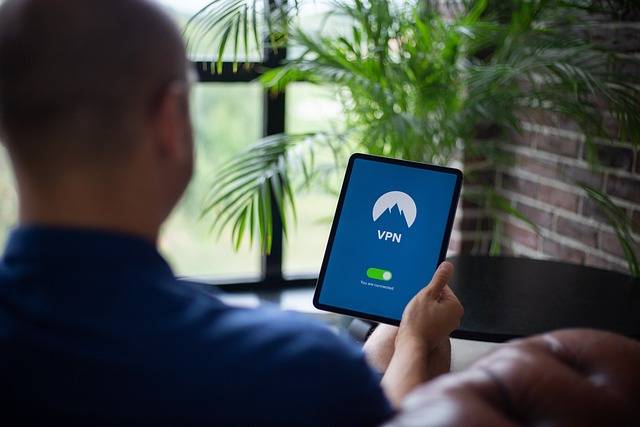In the digital age, it is important to understand how different technologies interact with each other. In this blog article, we will be exploring the effects of virtual private networks (VPNs) on Apple’s AirDrop feature.
We will be examining the impact that VPNs have on AirDrop performance and functionality in order to better understand their relationship. By analyzing whether or not a VPN affects AirDrop, we can gain insight into how these two technologies interact with one another and make more informed decisions about our online security needs.
Table of contents: Does VPN Affect Airdrop
- Uncovering the Effects of VPN on Airdrop
- Exploring the Impact of Virtual Private Networks on Airdrop
- Investigating How VPNs Influence Airdrop Performance
- Examining the Relationship Between VPN and Airdrop Functionality
- Analyzing Whether or Not a VPN Impacts AirDrop
The use of virtual private networks (VPNs) has become increasingly popular in recent years, with more and more people using them to protect their online privacy and security. But does the use of a VPN affect one’s ability to take advantage of Apple’s AirDrop feature?
AirDrop is an incredibly useful tool for transferring files between two Apple devices wirelessly. It works by creating a peer-to-peer Wi-Fi network between the two devices, allowing users to quickly share photos, documents, videos, and other files without having to rely on email or cloud storage services.
In order for AirDrop to work properly, however, both devices must be connected to the same Wi-Fi network or Bluetooth-enabled device. This means that if you are using a VPN on your device while attempting an AirDrop transfer, it may not work as intended due to the encrypted connection created by your VPN service provider.
It is important, however, that even though you may experience issues when trying an AirDrop transfer while connected through a VPN service provider, this does not mean that all hope is lost! There are some steps that can be taken in order to ensure successful transfers:
1) Disconnect from your current VPN connection before attempting any file transfers via AirDrop;
2) Ensure both devices have Bluetooth enabled;
3) Make sure both devices are connected either directly or indirectly (through another device, such as a router, via Wi-Fi;
4) Check if there are any restrictions set up within either device’s settings that could prevent successful file-sharing attempts (e.g., parental controls).
5) If all else fails, then try connecting directly through Ethernet cable instead of relying solely on wireless connections – this should help eliminate any potential interference caused by external factors such as distance/location, etc.
By following these simple steps, it should be possible for users who rely heavily upon their virtual private networks (VPNs) but still wish to take full advantage of Apple’s convenient ‘Air Drop’ feature – enabling quick and easy file sharing between compatible iOS/Mac OSX operating systems!
Uncovering the Effects of VPN on Airdrop
As the world of technology continues to evolve, so do the ways we can access and protect our data. One such method is through virtual private networks (VPNs). VPNs are becoming increasingly popular as they offer a secure connection between two or more devices over an unsecured network. But what about Airdrop? Does using a VPN affect its performance?
To answer this question, let’s first look at how Airdrop works. Essentially, it allows users to share files wirelessly between Apple devices without having to use email or other file-sharing services. The process is simple: one device sends out a signal that another device picks up and then downloads the file from there.
Now that we know how Airdrop works let’s explore whether using a VPN affects its performance in any way. In short – yes! When you’ve connected to a VPN server, your IP address changes which can cause some issues with AirDrop connections since it relies on knowing both parties’ IP addresses for successful transfers of files between them. As such, if you’re connected via VPN when attempting an AirDrop transfer, it may not be successful due to your changed IP address.
In addition, depending on where your chosen server is located geographically will also have an impact on speed and latency when transferring files via AirDrop. If you choose servers located far away from each other, then naturally, this will slow down the transfer rate significantly compared with connecting directly without any intermediary service like a Virtual Private Network (VPN).
To conclude, while using a Virtual Private Network (VPN) does not necessarily prevent you from successfully completing an AirDrop transaction – it can certainly have negative impacts on speed and reliability due to changing IP addresses as well as geographical distance factors involved in choosing servers for connection purposes. Therefore if possible, try avoiding the use of these services when attempting transfers over Apple’s proprietary wireless protocol –AirDrop–for best results!
Exploring the Impact of Virtual Private Networks on Airdrop
The use of virtual private networks (VPNs) is becoming increasingly popular as a way to protect one’s online privacy and security. With the rise in popularity, it is important to understand how VPNs may affect other activities, such as using an airdrop. An airdrop is when tokens or coins are distributed for free by developers or companies in order to promote their project or coin.
A VPN can have both positive and negative effects on an airdrop depending on the type of network being used and its settings. On the one hand, using a VPN can help you access restricted sites that would otherwise be unavailable due to geographical restrictions imposed by certain countries. This could potentially give you access to more opportunities for participating in an airdrop than if you were not using one at all.
On the other hand, some networks may block IP addresses associated with known cryptocurrency exchanges, which could prevent users from accessing certain websites related to cryptocurrency trading, including those offering token sales through an Airdrops program. Additionally, some networks might also limit your bandwidth which could slow down your connection speed resulting in slower response times when trying to participate in any kind of transaction involving cryptocurrencies, such as buying tokens during an Airdrops campaign.
Overall, it is important for users who plan on utilizing virtual private networks while participating in Airdrops campaigns to research different types of services available before making any decisions about what type they should use.
Investigating How VPNs Influence Airdrop Performance
Investigating how Virtual Private Networks (VPNs) influence Airdrop performance is an important task for any organization looking to maximize its digital marketing efforts. VPNs are a powerful tool that can help organizations protect their data and ensure secure communication between users, but they can also have a negative impact on the performance of Airdrops.
A recent study conducted by researchers at the University of California, Berkeley, revealed that using a VPN could reduce the effectiveness of an Airdrop campaign by up to 20%. This means that organizations should be aware of how their use of VPNs may affect their ability to reach potential customers through this popular marketing technique.
The research team found that when using a VPN, there was less data available for analysis and fewer opportunities for targeted advertising due to reduced visibility into user behavior. Additionally, since most people use multiple devices with different IP addresses while connected via a single network connection through the same provider, it becomes more difficult to accurately track user activity across platforms and devices.
Organizations should take these findings into account when planning out future campaigns in order to ensure maximum effectiveness from each one. By taking steps such as limiting access points or ensuring all traffic is routed through one central server rather than multiple endpoints, companies can minimize any potential losses associated with using virtual private networks during an Airdrop campaign.
Examining the Relationship Between VPN and Airdrop Functionality
As technology continues to evolve, so do the features and capabilities of our devices. One such feature is Airdrop functionality, which allows users to quickly share files between Apple devices. But how does this relate to Virtual Private Networks (VPNs)? Examining the relationship between VPNs and Airdrop can help us better understand their respective roles in keeping our data secure.
A VPN creates a secure connection between two or more computers by encrypting all traffic sent over it, making it impossible for anyone outside of that network to intercept or access your data. This makes them an ideal solution for businesses that need extra security when transferring sensitive information across networks.
However, while a VPN provides an additional layer of protection against malicious actors trying to gain access to your data, it doesn’t necessarily affect Airdrop functionality itself – meaning you can still use the service without any issues even if you have a VPN enabled on your device(s).
That said, there are certain scenarios where using both together could be beneficial; for example, if you’re sharing large files with someone else who also has a VPN enabled on their device, then having both active will ensure that no one else is able to intercept those files as they travel from one computer/device/network-to-another.
Analyzing Whether or Not a VPN Impacts AirDrop
In the digital age, it is becoming increasingly important to understand how different technologies interact with one another. One such technology that has been gaining traction in recent years is virtual private networks (VPNs). With the rise of VPN usage, many people are wondering if they can still use AirDrop while connected to a VPN.
The short answer is yes – you can use AirDrop while connected to a VPN without any issues. However, there are some things that need to be taken into consideration before using this feature. First and foremost, make sure your device’s firewall settings allow for connections from other devices on the same network as your own device when using AirDrop over a VPN connection.
Additionally, keep in mind that depending on which type of encryption protocol your chosen VPN uses (OpenVPN or IPSec), certain features may not be available when connecting through it, so make sure you check compatibility before attempting an Airdrop transfer over a secure connection!
Finally, it’s also worth noting that although most modern-day operating systems have built-in support for both OpenVPN and IPSec protocols by default – older versions may require additional software installation prior to being able to utilize them properly with AirDrop transfers over secure connections.
Overall though – provided all necessary steps have been taken beforehand – utilizing an encrypted tunnel via a Virtual Private Network should not affect one’s ability to successfully send files through Apple’s proprietary file-sharing service: Airdrop!








